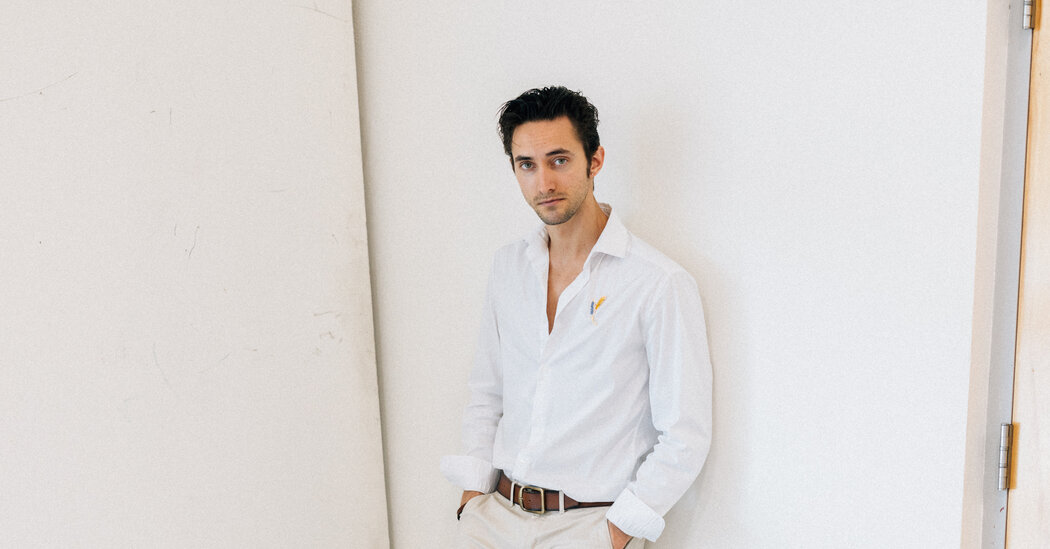
“I didn’t have the stamina for Balanchine,” he said. “When you’re onstage, you’re dancing all the time. The first time I danced ‘Square Dance’” — a 1957 Balanchine ballet — “I was dying. I couldn’t breathe.”
Lopez, who first saw him dance at a benefit performance in London in 2022, has observed this evolution. “I could see him making the connection,” she said, “between the way we work in class, with different rhythms and speed and syncopation, and the way it allows him to move in Balanchine’s ballets.”
“At first you fight it in your head,” Olshanskyi said, “but I can see it now. I can move faster now and I am actually jumping even a little bit higher.” A turning point was dancing “Agon,” one of Balanchine’s most modernist, stylized and rhythmically complex works, set to Stravinsky. “I love ‘Agon,’” he said, eyes widening. “There are so many ways to dance it, so many ways to show the steps.”
When the war began, Olshanskyi, then a principal dancer at the National Ballet of Ukraine, was on tour in the Netherlands with a Dutch dancer and his Ukrainian colleague Oleksii Tiutiunnyk. Olshanskyi and Tiutiunnyk decided to stay there, performing at benefit galas to raise funds for the war effort and then assisting in the creation of the United Ukrainian Ballet, a pickup company of Ukrainian dancers stranded abroad by the Russian invasion.
It was in The Hague that Olshanskyi met Ratmansky, when the Ukrainian Ballet was rehearsing his “Giselle” in the summer of 2022. The company toured widely — the Netherlands, Britain, Australia and the United States — though support eventually faded, and the troupe disbanded in January. Some dancers returned to Ukraine; others joined ensembles abroad. A few who remained in The Hague are attempting to create a smaller version of the group.
Facing challenges at home, or family separation, even some dancers who at first remained in Ukraine have left. Oleksii Potiomkin, a member of the National Ballet who became an army medic at the start of the war, went to join his wife and son in Italy, where he dances freelance. “The guys from my military unit told me, ‘You should go back onstage; that is your front line,’” he said in an interview. “I want to represent Ukrainian art on a good level.”





